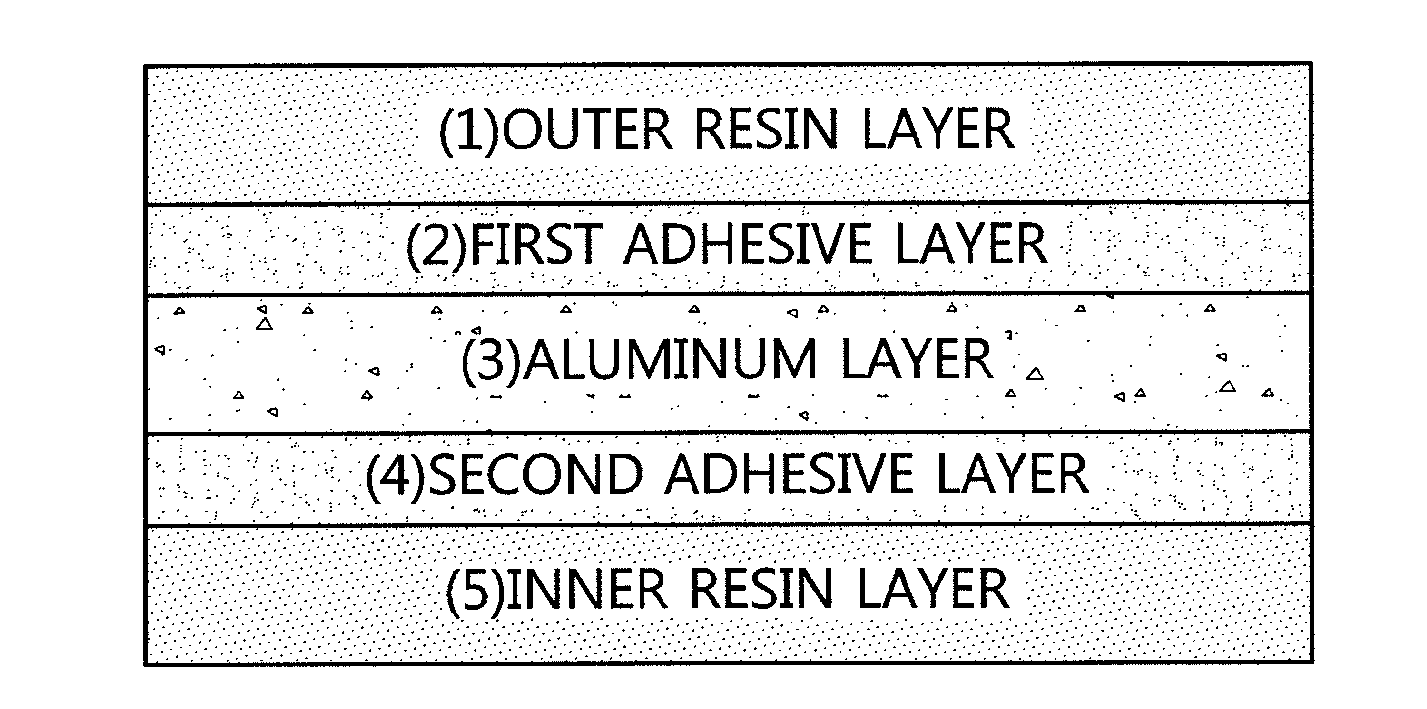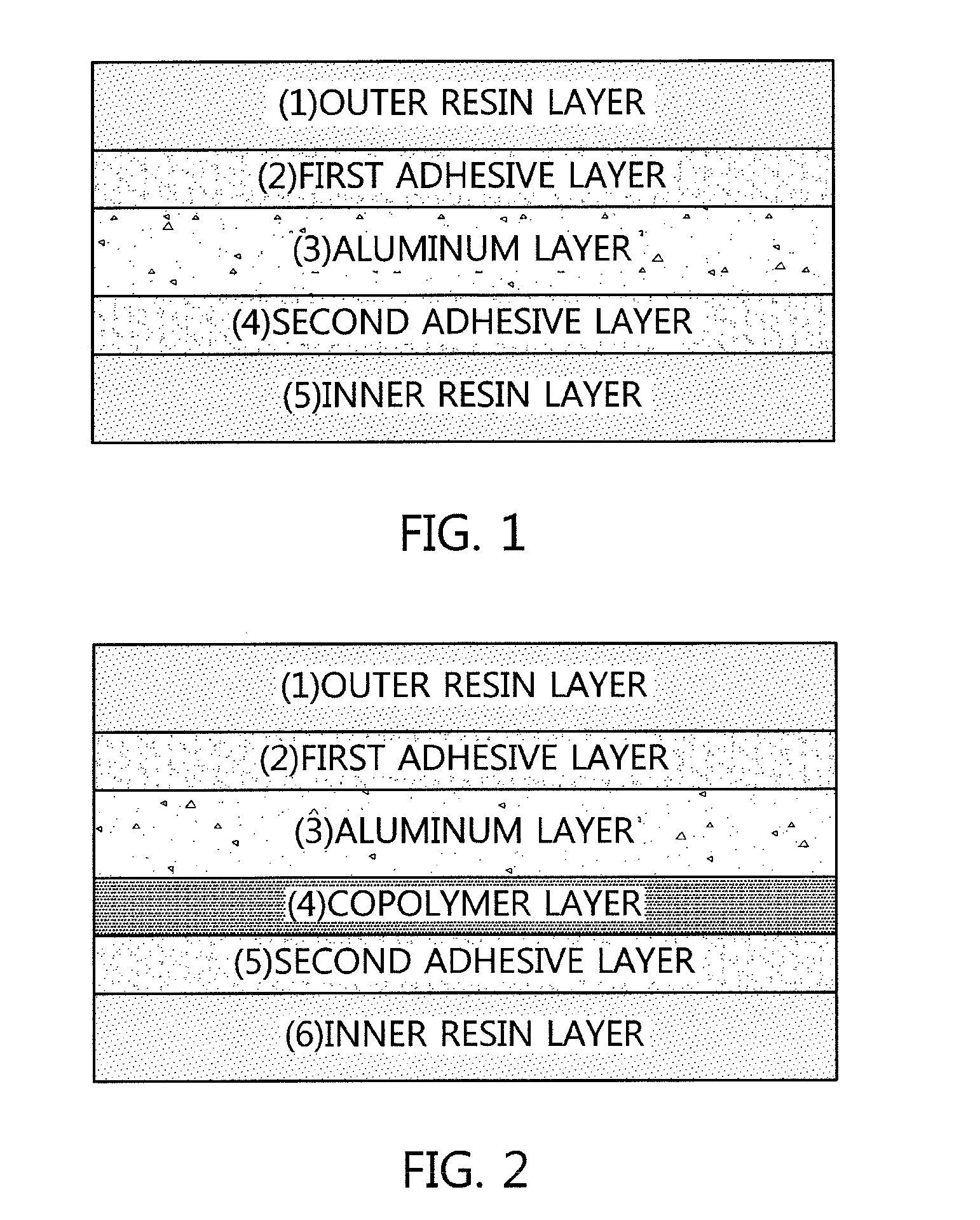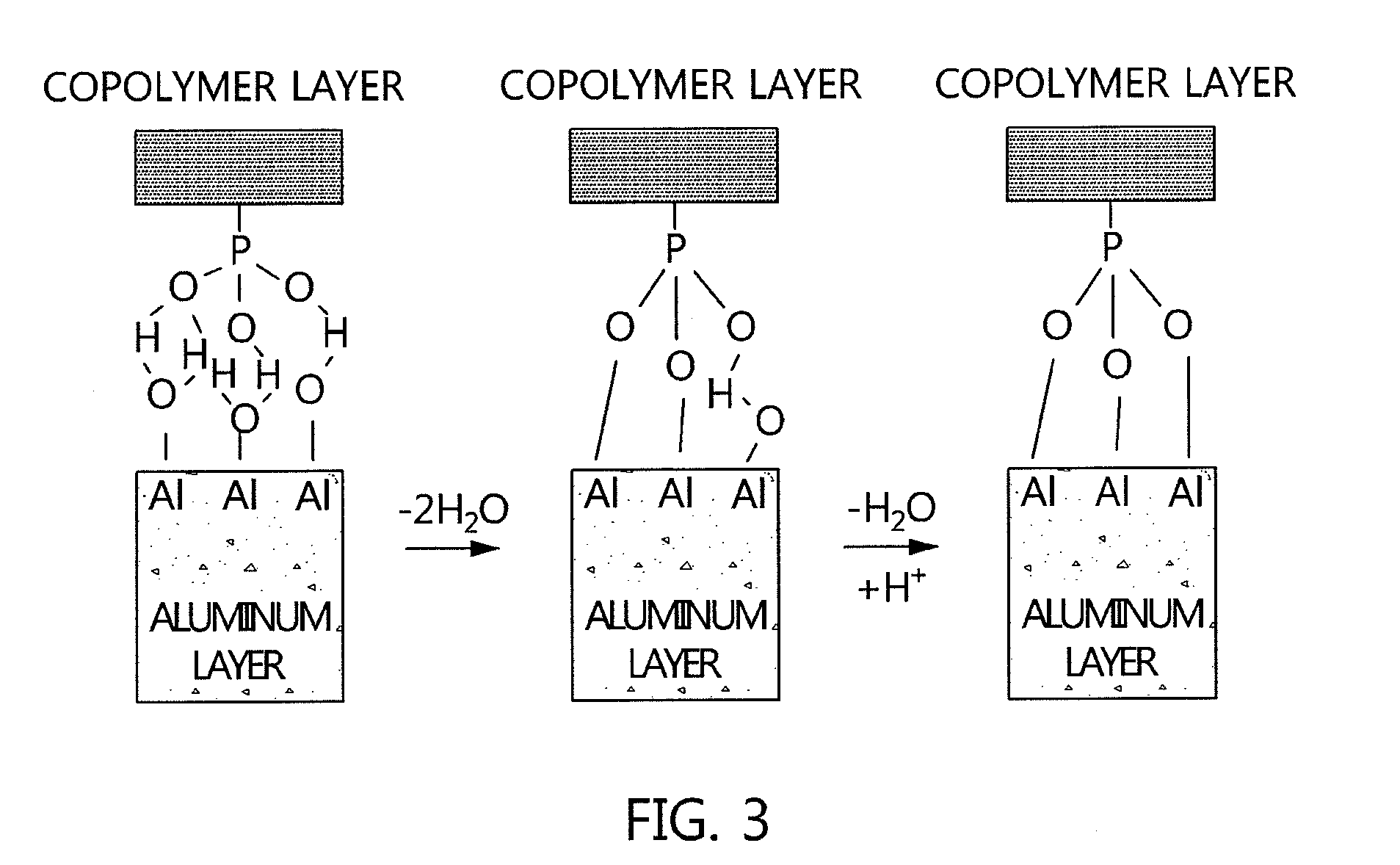Aluminium pouch film for secondary battery, packaging material comprising same, secondary battery comprising same, and manufacturing method therefor
- Summary
- Abstract
- Description
- Claims
- Application Information
AI Technical Summary
Benefits of technology
Problems solved by technology
Method used
Image
Examples
example 1
[0040]A 40 μm thick aluminum foil (made by Dong-il Aluminum) was slit to an area of 30 cm×20 cm, and then washed with water, thus removing dust from the surface thereof.
[0041]Subsequently, an outer resin layer was stacked on the first surface of the aluminum foil in such a manner that a 4 μm thick polyurethane adhesive resin (made by Hi-Chem) was applied, and 25 μm thick Nylon 6 (made by Hyosung) was formed on the aluminum layer by dry lamination and then aged at 40° C. for 7 days.
[0042]Subsequently, an inner resin layer was stacked on the second surface of the aluminum foil in such a manner that an adhesive comprising polyurethane (made by Mitsui) as a main component and a monomer (made by Rhodia) in which one chain of polyol was modified with SiO2, mixed at a weight ratio of 70:30, was applied to a thickness of 4 μm, and 40 μm thick polypropylene (made by Okamoto) was formed on the aluminum layer by dry lamination and then aged at 40° C. for 5 days.
example 2
[0043]A 40 μm thick aluminum foil (made by Dong-il Aluminum) was slit to an area of 30 cm×20 cm, and then washed with water, thus removing dust from the surface thereof.
[0044]Subsequently, a copolymer layer was stacked on the second surface of the aluminum foil in such a manner that a mixture comprising VPA (Vinyl Phosphonic Acid) (made by Rhodia) and AA (Acrylic Acid) at 5:1 was applied to a thickness of 5 μm and then thermally treated at 120° C. for 3 days.
[0045]Subsequently, an outer resin layer was stacked on the first surface of the aluminum foil in such a manner that a 4 μm thick polyurethane adhesive resin (made by Hi-Chem) was applied, and 25 μm thick Nylon 6 (made by Hyosung) was formed on the aluminum layer by dry lamination and then aged at 40° C. for 7 days.
[0046]Subsequently, an inner resin layer was stacked on the second surface of the aluminum foil having the copolymer layer in such a manner that a polyurethane adhesive (made by Mitsui) was applied to a thickness of 4...
example 3
[0047]A 40 μm thick aluminum foil (made by Dong-il Aluminum) was slit to an area of 30 cm×20 cm, and then washed with water, thus removing dust from the surface thereof.
[0048]Subsequently, an outer resin layer was stacked on the first surface of the aluminum foil in such a manner that a 4 μm thick polyurethane adhesive resin (made by Hi-Chem) was applied, and 25 μm thick Nylon 6 (made by Hyosung) was formed on the aluminum layer by dry lamination and then aged at 40° C. for 7 days.
[0049]Subsequently, an inner resin layer was stacked on the second surface of the aluminum foil in such a manner that an adhesive comprising polyurethane (made by Mitsui) as a main component and a monomer (made by Rhodia) in which one chain of polyol was modified with a phosphate group, mixed at a weight ratio of 70:30, was applied to a thickness of 4 μm, and 40 μm thick polypropylene (made by Okamoto) was formed on the aluminum layer by dry lamination and then aged at 40° C. for 5 days.
PUM
| Property | Measurement | Unit |
|---|---|---|
| Percent by mass | aaaaa | aaaaa |
| Mass | aaaaa | aaaaa |
Abstract
Description
Claims
Application Information
 Login to View More
Login to View More - R&D
- Intellectual Property
- Life Sciences
- Materials
- Tech Scout
- Unparalleled Data Quality
- Higher Quality Content
- 60% Fewer Hallucinations
Browse by: Latest US Patents, China's latest patents, Technical Efficacy Thesaurus, Application Domain, Technology Topic, Popular Technical Reports.
© 2025 PatSnap. All rights reserved.Legal|Privacy policy|Modern Slavery Act Transparency Statement|Sitemap|About US| Contact US: help@patsnap.com



